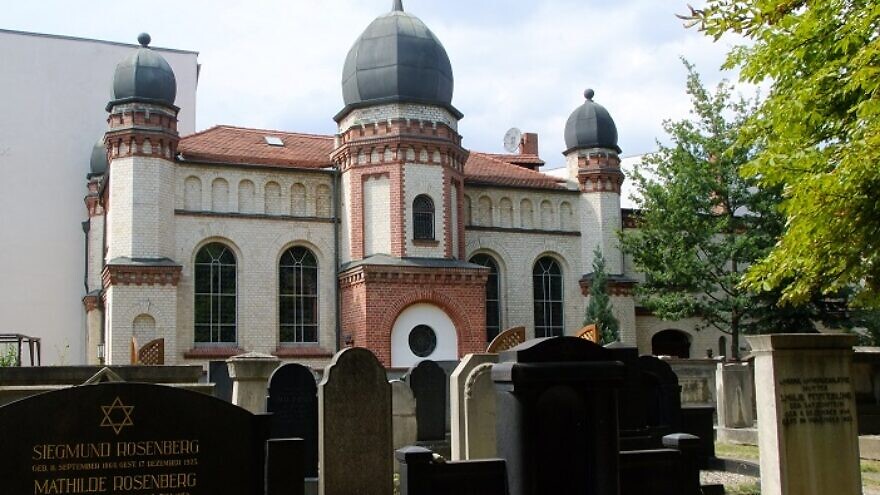Inside the Center for Creativity at the historic Francke Foundation in Halle, founded as a Pietist education center for orphans in 1698, a couple of kids sitting in a cozy nook stared at a picture of the Halle synagogue. The German teacher said nothing about the Yom Kippur assault on it that took place a month earlier and focused instead on synagogue life, pulling out a mock Torah scroll to captivate the audience of children and parents.
In fact, this family day dedicated to aspects of Jewish tradition was planned long before the attack ever happened as part of seventh annual “Halle Days of Jewish Culture” organized by the Leopold Zunz Center, a society affiliated with Halle’s Martin Luther University dedicated to research and dissemination of Jewish tradition in central Germany.
Prior to the attack on Oct. 9, most Jews had never heard of Halle. And, as a small city of 250,000 people in former East Germany, most Halle residents likely had few encounters with Jews and Judaism. In fact, Germans often dismiss Halle—about a two-hour train ride from Berlin—as that “city near Leipzig.” Given the surge of right-wing votes in former East Germany, some even stereotype East German cities as dens of right-wing extremists, like the one who tried to break down the synagogue’s door to kill as many Jews as possible.
“Most German non-Jews hear about Judaism through the Holocaust, and the expulsions in Middle Ages and the Crusades, if they even hear about that. It’s victimhood,” said Anton Hieke, a lecturer of Jewish studies at Halle’s Martin Luther University and one of the organizers of the “Halle Days of Jewish Culture” meant to counter stereotypes and prejudices. “If all you know about a tradition is victimhood, you can’t relate and grasp that it’s part of your own culture.”
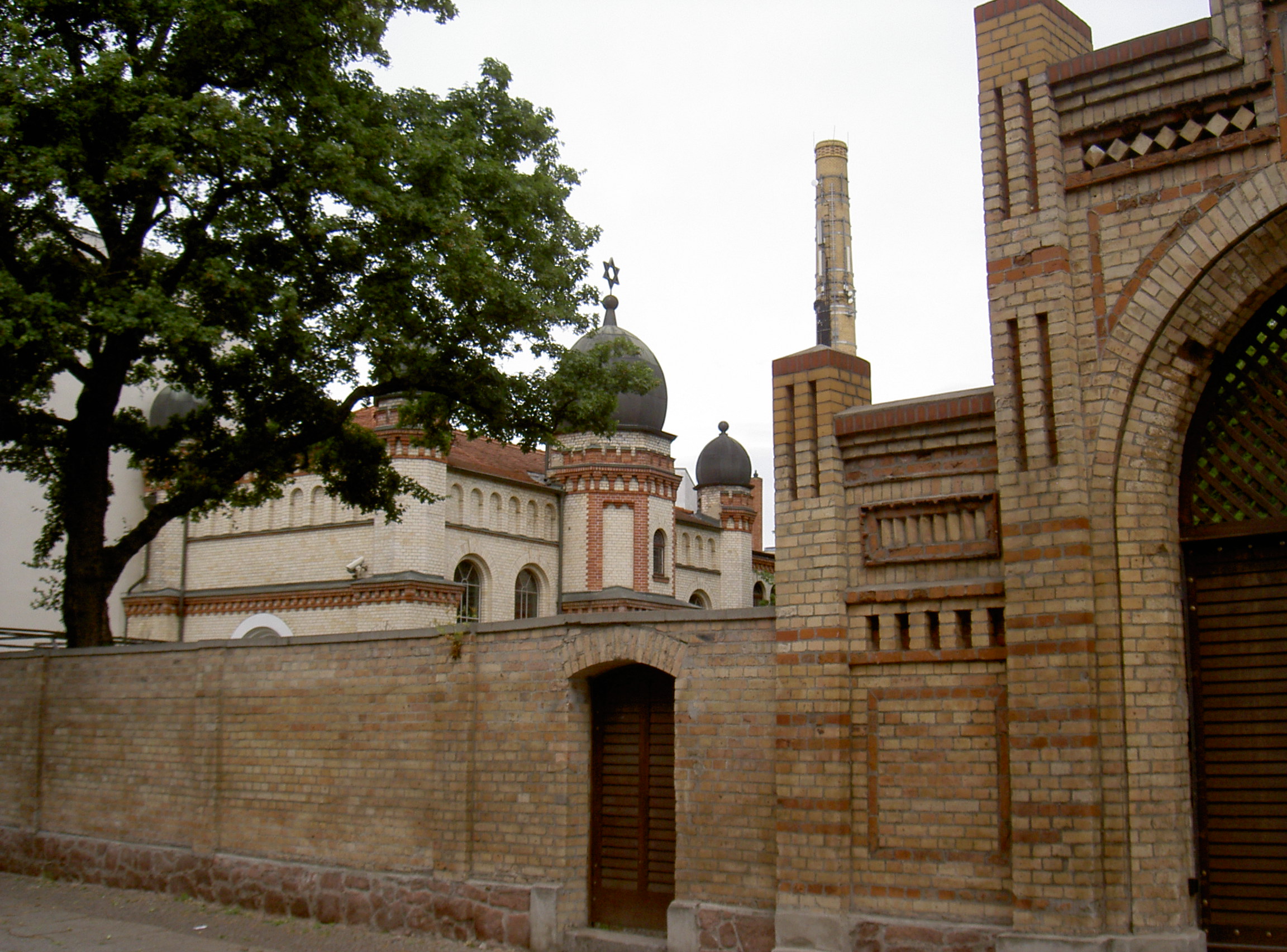
The program runs through Nov. 29 and features concerts and lectures dedicated to Judaism and Jewish culture, including a conversation with Natan Sharansky. It also includes a day of family activities, where both Jewish and non-Jewish kids can make kipahs and mezuzahs out of paper, and learn Hebrew basics. Israel features less into the program, Hieke said, lest it turn into a political debate.
An outpouring of support
Since the assault, Halle has become a temporary den of philo-Semitism. March of Life, an organization founded by descendants of Nazis to fight global anti-Semitism, held a pro-Jewish rally on Nov. 3. German and Israeli flags clobbered Hallmarkt, the historic center of Halle’s salt trade, and the streets of Halle as 500 participants marched to the synagogue. Recovered Jew-haters proudly declared on stage: “Never Again.”
U.S. Secretary of State Mike Pompeo paid his respects to the synagogue on Nov. 7, as well as to the Middle Eastern eatery where an out-of-towner was killed by the extremist. Days after the attack, Ronald S. Lauder, president of of the World Jewish Congress, and Max Privoroski, president of Halle’s Jewish community, led German politicians on a solidarity tour.
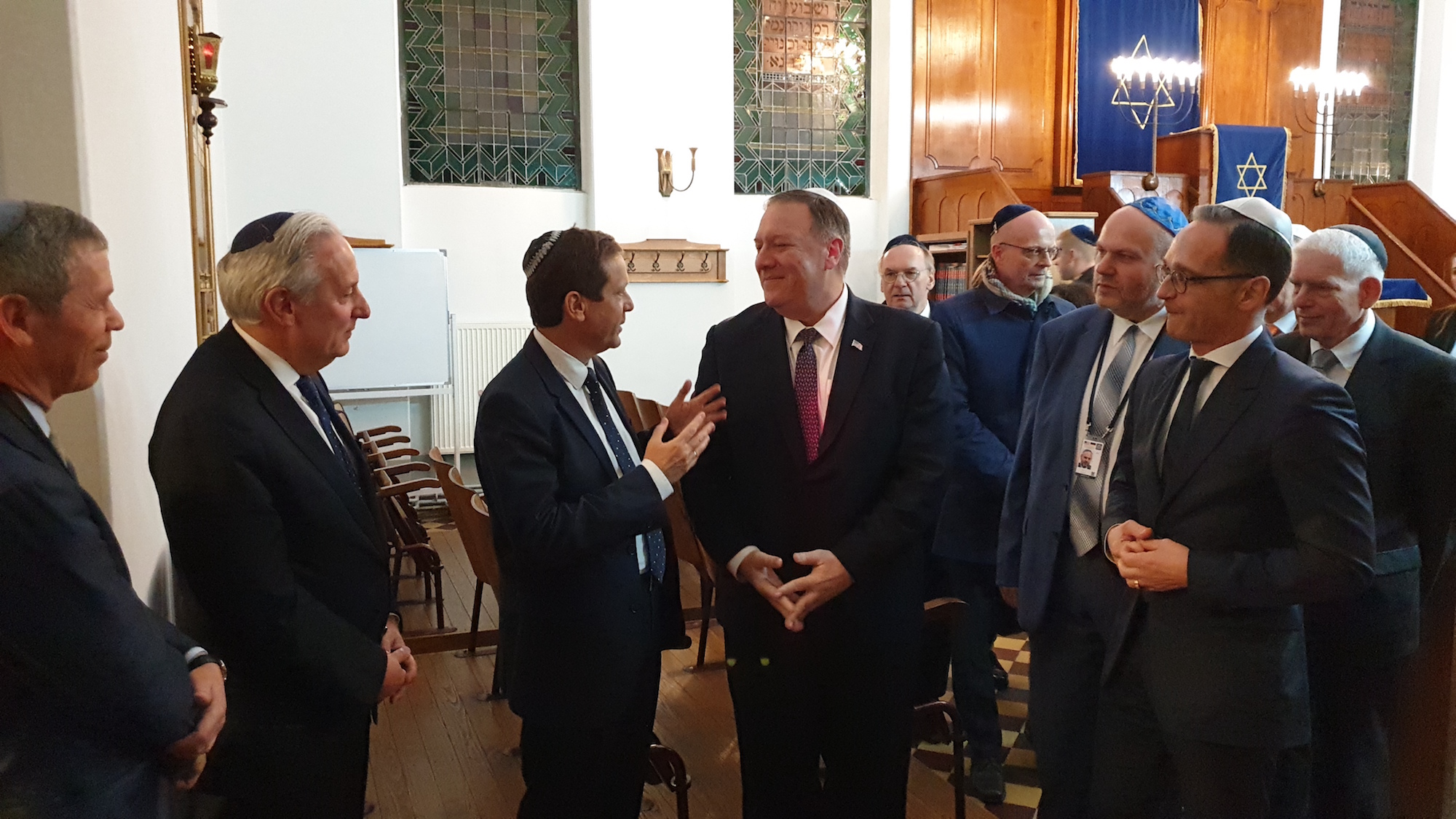
Privoroski, who came to Germany from Kiev at the time of the fall of the Berlin wall, today leads Halle’s 560 Jews, who hail mostly from the former Soviet Union (which make up the majority of contemporary German Jewry). He never anticipated his leadership would be put to the test like this, as he now serves as the public face of the community, receiving politicians, journalists and guests while calming and shaping a community suddenly catapulted into the world spotlight.
“The support was enormous,” Privoroski said over e-mail in between his many new responsibilities, coming “from neighbors and the city as a whole, and through hundreds of e-mails and various messages or letters. This stance of the absolute majority makes me more optimistic than I was before the attack.”
Recent statistics, however, show reason for some pessimism. A survey done for ARD public broadcasting after the attack found that 59 percent of voting-age Germans believe that anti-Semitism is spreading in their communities—an increase of 19 percent since last year. Incidents perpetrated mainly by Arab nationals have made recent headlines include an attempted knife attack on the New Synagogue in Berlin weeks before the Halle attack; the spitting on Chabad-Lubavitch Rabbi Yehuda Teichtal, a leader of the Berlin Jewish community; and other instances of cursing or intimidating people wearing Jewish symbols or speaking Hebrew.
“While we hear a lot about the rise of anti-Semitism in recent months, we hear less about the grassroots support that Jews have received in the wake of the attack,” said Josh Spinner, executive vice president and CEO of the Ronald S. Lauder Foundation, which supports Jewish life throughout Europe. Spinner, also a Jewish leader in Berlin, developed ties to the city since running a day camp there in 1998.
“In Berlin, members of our community received spontaneous letters of support from random neighbors offering their condemnation of the Halle attack and reassurances that they would stand up to anti-Semitism,” he continued. “In Halle, the maker of the synagogue’s wooden door offered to produce a new one for free; schools organized visits to the synagogue, and hundreds stood outside the synagogue on the Shabbat following the attack holding candles to show their support.”
Jewish history of Halle
The newly famous Halle synagogue was built in 1953 out of the hall of the funeral home (hence its compact size) and is the only operating synagogue in the state of Saxony-Anhalt, of which Halle is the “cultural capital.” A wall surrounding the campus serves as a type of fortress. The attacker’s homemade weapons and explosives were no match for the wooden doors that serve as entryways. Worshippers knew what was happening through a surveillance camera installed by the Jewish Agency.
At its peak before the war, an estimated 1,400 Jews lived in the city of about 200,000 people. Destroyed during Kristallnacht, the city’s Reform synagogue with its ornate Moorish design took up a good chunk of a city block. Its former grounds now make up apartment buildings, a lot and a construction site. A portion of its facade was made into a memorial by the GDR in the late 1980s, when the Communist government sought to open to the West and attract Jewish tourism (and dollars). It stands prominently on “Jerusalem Square,” these days adorned with sympathetic wreaths, near the headquarters of the Jewish community.
“The founding myth is that Jews have lived in the city for 1,200 years—that even predates Germany—and that they came here for the salt-mining industry, which was always very important,” Hieke said on a Jewish tour of the city.
Halle, which roughly means “salt production,” developed first as a salt-mining town in medieval times due its brine-rich grounds. The city’s red-and-silver logo could be mistaken for a permutation of a Turkish flag with a red star and crescent actually meant to mimic a salt crystal and pen. (Although the star is six-pointed, like the Star of David).
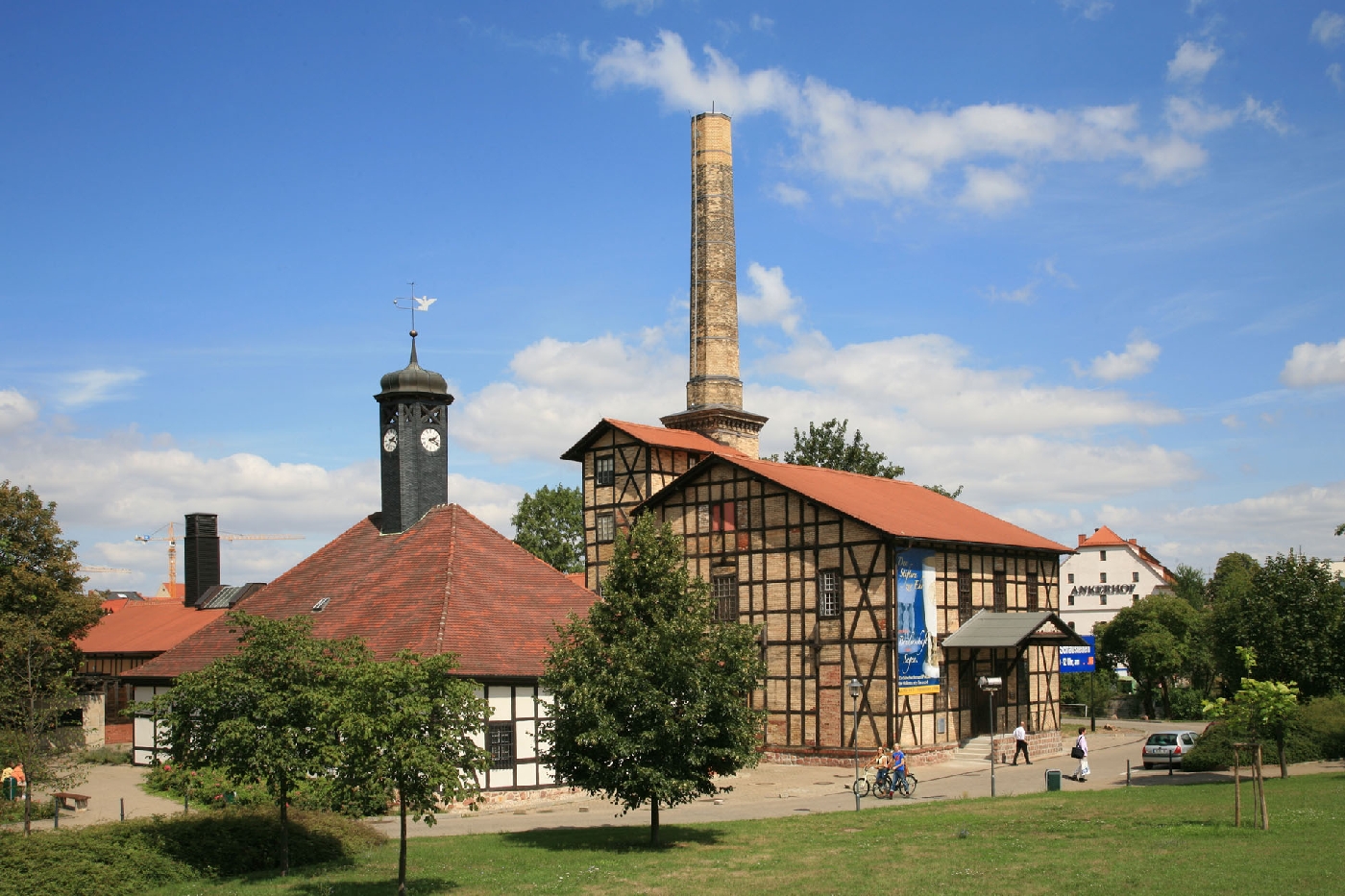
Actual evidence for Jewish settlement in the region dates back to the 11th century. Jews were believed to have engaged in commerce in Halle, an economic center, when they weren’t victim to the Holy Roman Germanic Empire’s pastime of sporadic Jewish expulsion.
During the industrial age, Jews made their mark in the city in a field they led nationally: retail. In the bustling Marktplatz, across from the famous five spires of the Market Church and Red Tower, the once Jewish-owned Art Deco department stores still stand. Halle surrendered to the Americans in time to stave off bombardment of its collection of medieval, Baroque and Renaissance cathedrals, castles and towers.
The most well-known Jew associated with the city is Leoplold Zunz, a forefather of academic Jewish studies, although he never lived in the city; rather, he earned his doctorate from the University of Halle. Halle’s most famous resident is the “Messiah” composer George Frederic Handel, but his hometown was too small for his ambition. He left for Europe’s bigger cities when he turned 18. The “Handel House” where he grew up and the summer’s annual Handel Festival are among the city’s claims to fame.
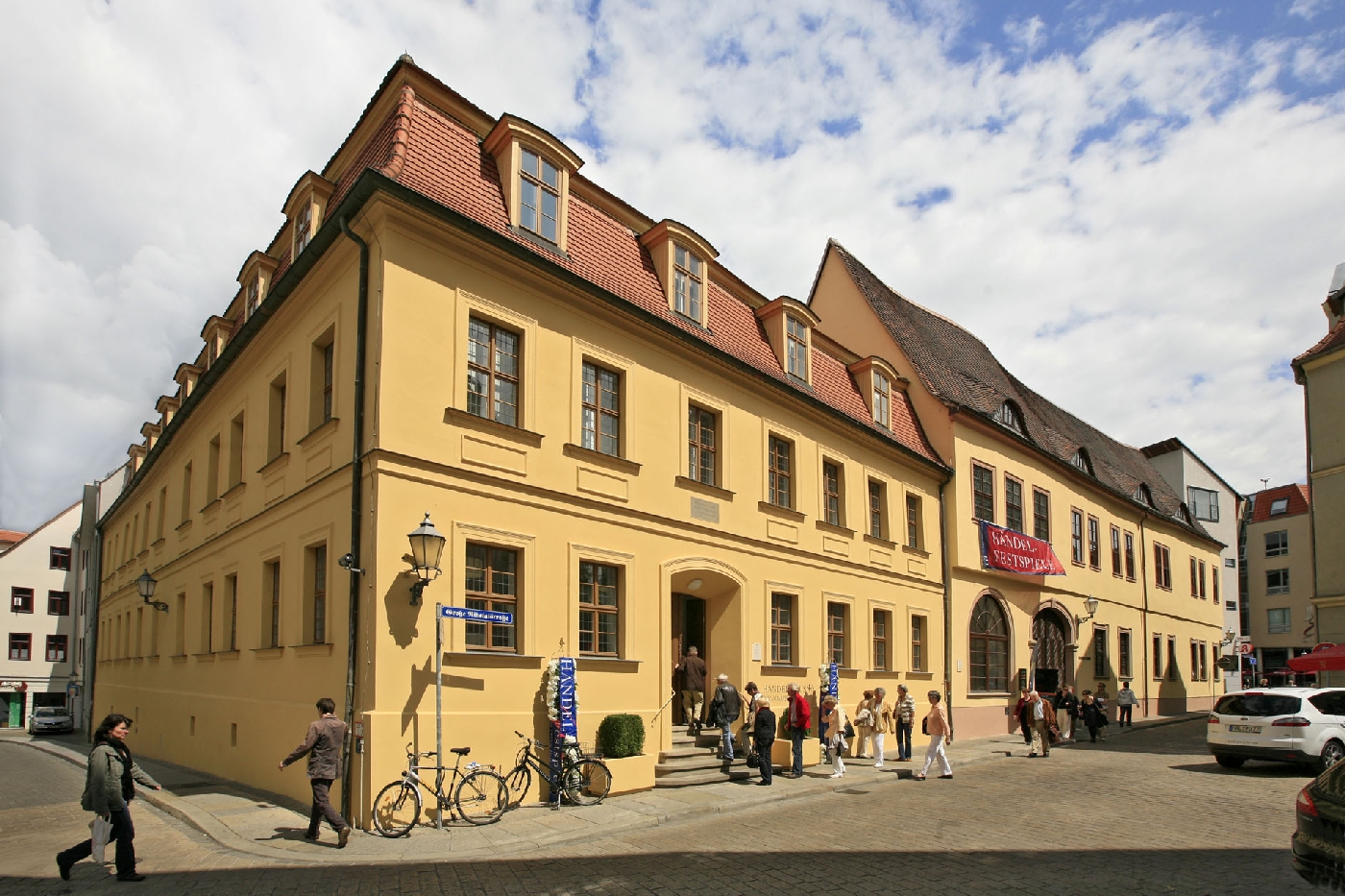
Like most former East German cities, Halle underwent de-industrialization since Germany’s reunification. University students contribute a young, diverse vibe, as does its eccentric Beatles Museum—in tune with the city’s musical theme. Halle also boasts German’s oldest chocolate factory, Halloren Chocolate, which provide a rare kosher treat in a city that has no kosher restaurant. The famous “Halloren-Kugeln” (chocolate nuggets) happen to be kosher.
Contemplating the future
Proviroski cannot say yet say how the fate of the community will be altered from the attack on the day when Jewish fate is believed to be sealed. They’re still recouping, while he’s hoping he can catch up on some sleep after their planned Hanukkah party on Dec. 23. For now, the major visible change is the constant police presence outside the synagogue, part of renewed efforts to increase security at Jewish institutions. But will that be enough to secure Jewish safety?
“Overall, I am very pessimistic about the future of the Jewish community in Germany and in some other European countries,” said Proviroski. “The majority of the population supports us. As for the state, it seems that the government has no idea how to tackle the problems (not only hatred of Jews).”
For Hieke, it’s time to rethink education about Jews and Judaism, which have long been part and parcel of German culture.
“The attacker went through the German system; he got that approach of ‘Remembrance Culture’ only. It didn’t work, apparently, and it doesn’t work for many people,” he explained. “I used to teach at a school, and it’s just too far away from the students. They’re burdened with it on the one hand and overwhelmed by it on the other. They hear it all the time in history, ethics and German class. One of the reasons why it doesn’t really work is that they’re overwhelmed, and if you’re overwhelmed as a student, you shut off.”
The Halle Days of Jewish Culture, sponsored by various cultural and Jewish institutions, as well as the city itself, drew several thousand participants so far, mostly non-Jews. One mother brought her 5-year-old and 7-year old to its family day. A Christian, she came to Germany in 2015 from Syria. She had planned to attend regardless of the attack, but it gave her extra motivation.
“I believe it’s important to learn about other religions,” she said as Hieke looked on, pleased. Her son proudly wore his self-made kipah with a grin. A sign for a brighter future, he said, not only for Halle.
“If the political response matches the grassroots one,” Spinner added, “there should be some optimism about the possibility of Jewish life here, despite the obvious challenges.”


























